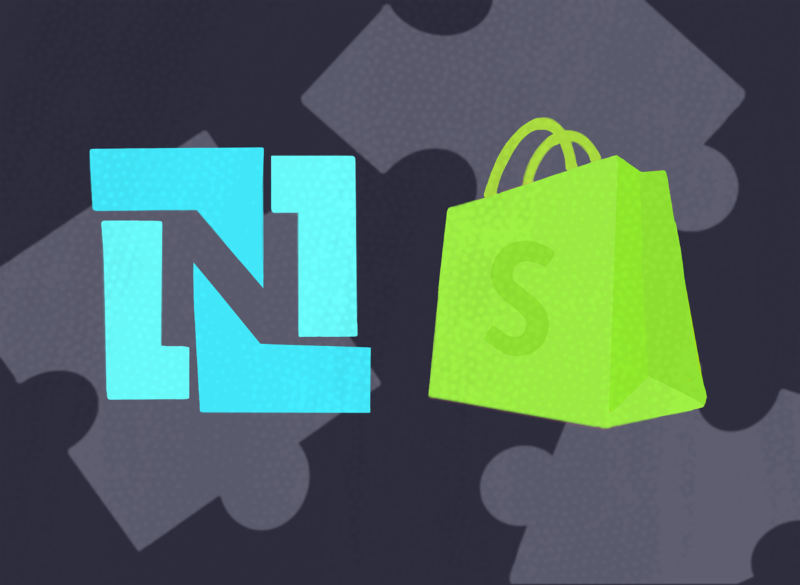Getting Started with E-Commerce Integrations
08.19.20
Cloud-based e-commerce software brings the benefits of enterprise-level organizations within the reach of small and mid-sized companies. Benefits include automated inventory tracking, customer relationship management (CRM), professional services automation (PSA) and enterprise resource planning (ERP). However, the potential of this software is wasted until it’s carefully integrated into your company’s existing systems. Let’s take a look.
Finding the Right Platform
The market offers numerous solutions for backend data management, like NetSuite, Salesforce and Microsoft Dynamics. Likewise, there are several options for companies seeking to update existing CRM or ERP systems with a state-of-the-art e-commerce solution.
Shopify has emerged as a leading e-commerce integration for its accessibility and affordability. With a worldwide user base and growing support from numerous affiliate software development companies, Shopify represents a robust ecosystem of thousands of permutations of modules adaptable to businesses of all shapes and sizes.
Integrating e-commerce platforms with existing business management systems requires a thorough understanding of both. Before choosing a platform, your strategic evaluation should ask the following questions:
1. Is integration the right approach?
Some backend systems offer their own e-commerce modules. Although you might expect such solutions to integrate flawlessly with the backend, they may not offer the flexibility, customization or branding that users have come to expect from a modern e-commerce experience.
2. Is a connector needed? Which one?
Some integrations are simplified by middleware with APIs developed specifically for the systems being integrated. In some cases, websites may require customization to align the business requirements specified for the backend with those specified for the online store. Your selection process should consider the complexity of your products and marketing.
3. What is the level of in-house expertise?
Ideally, someone in your organization has experience with one or both of the systems being integrated. Having someone on board who is fluent in the language of one or both applications will ease communication and e-commerce integration itself. If that expertise is not available among your team, consider a technology partner to simplify the process.
4. Should a legacy system be scrapped?
Are maintenance costs rising for your current system? Have there been rumblings of discontent with it because it lacks certain capabilities or doesn’t integrate well with other systems? It could be worth migrating to an all-Shopify system and abandoning the cost of your legacy system.
5. What is the ease of use and affordability?
Efficiency is the obvious key to providing a positive customer experience at a reasonable price. Resources spent establishing and maintaining a poorly selected or configured system will be unavailable for stakeholder needs. Before committing to an e-commerce integration strategy, be sure to evaluate the ongoing costs of installation, maintenance and support.
6. What types of products do you offer?
Are your products simple, or do they have many variants? Do you offer product bundles or frequently feature product combinations for marketing purposes? NetSuite has powerful features that accommodate complex products. Give special consideration to these features to fully realize their benefits in Shopify.
7. How many locations do you have?
Do you maintain inventory in multiple locations? Ship from some places but not others? Offer in-store pickup? Questions like these will help determine which combination of platform and add-ons will provide the functionality that best suits your situation.
8. What is your marketing strategy?
If you already have a successful marketing plan, you don’t want your new e-commerce integration to disrupt it. If you have long-established loyalty programs or routinely offer discounts, you need to be sure your newly integrated platform will allow those programs to continue seamlessly.
9. What are the ongoing needs of your organization?
You should adopt technology with an eye toward the future. As you assess options for integrating your online store with your business management systems, give due consideration to your future plans. What are your growth projections? Will you enter new markets or introduce starkly different products and services? A vibrant developer community supports Shopify and frequently introduces new features that expand the capabilities of the platform.
Technology has enabled smaller companies to benefit from the automated business management of their larger counterparts, offering countless efficiencies and competitive advantages. For some companies, the COVID-19 pandemic has necessitated a move to online sales as a matter of survival—but the rush to add an online store shouldn’t preclude a thoughtful analysis of how your new e-commerce integration will work with your old tools.
Whether your move online is an adaptation to current events or a long-planned migration, let our technologists help you answer the right questions.


